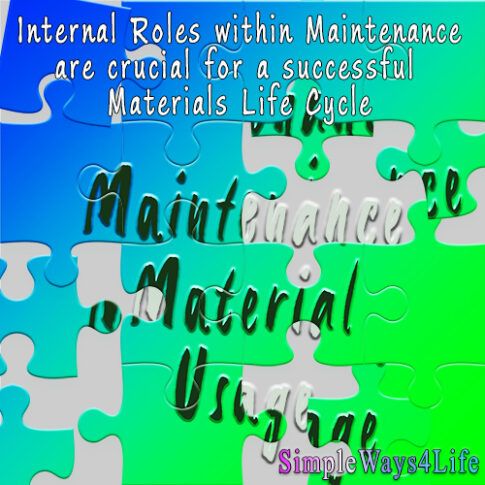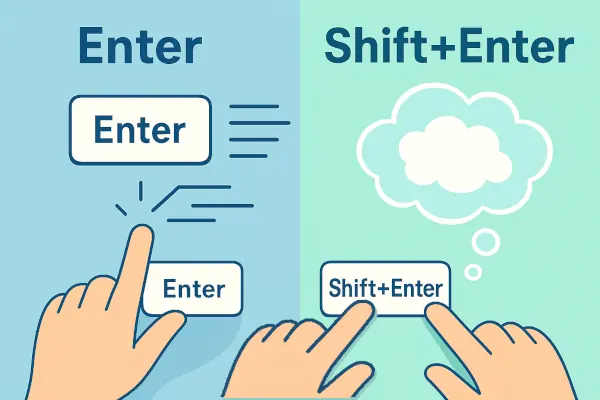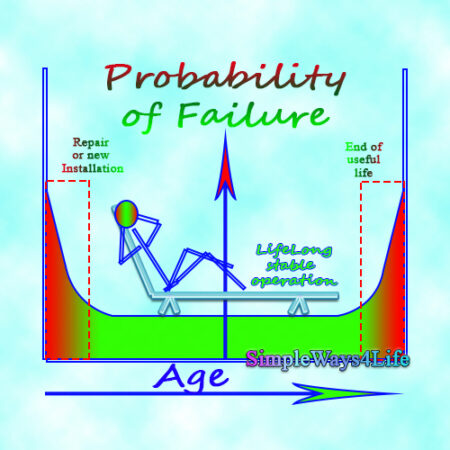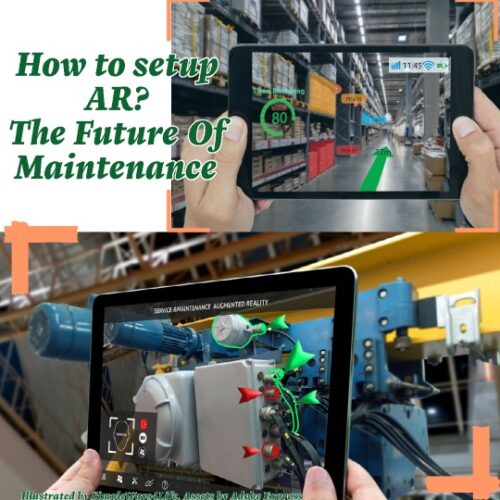After the trigger to provide a needed material as a warehouse stock or for urgent site need, comes the usage and the discard/dispose or repair. Those two steps at the end of the materials life cycle appear to be solely the responsibility of the maintenance team. However, the warehouse, finance and audit teams usually shows a lot of interest in the discard/dispose or the repair decisions. You can learn more about the possible roles and responsibilities for the trigger and provide stages in those two chats:
- The Roles in the Materials Management Cycles-Part 1
- Who will provide the maintenance material? Part 2
Roles and responsibilities to rationalize the materials usage
By default the maintenance team will use the materials needed for maintenance. However, within the maintenance team, there are different roles based on how the teams are structured. Some maintenance teams assign a team for the preparations, others divide the team into equal groups and each group handle their preparations. Also, some teams might be responsible for certain tasks. A team is responsible for greasing. Other team is responsible for alignment. A third team for welding, a fourth for assembly, a fifth for calibration and, another team for xyz. Every team has his own responsibilities. While some teams or individuals are multitasking. Examples, welding and assembling can be same team, calibration is a duty of the instrumentation team that repair cards at the instrument workshop. At the end of the day, every team has his own materials that they need to complete their tasks.
Controlling the material usage is not only to reduce cost. It ensures that materials flow through the supply chain mindfully. In other words, if one bearing is needed why two pieces were brought from the warehouse. What happened to the second part?
Propping Questions for mindful materials life cycle
A fault in the product weighing scale might result from one of 3 cards. The team brought them all from the storage and repaired the fault using one type of the cards. What happened to the other two? Welding electrodes are issued in packets, what if the job needs half a packet how it is recorded and who records the remaining material? This makes them available when planning of the next job. Accumulating remaining then performing a task without ordering parts from the store by the remaining material is great from the cost point of view. However, the automated maintenance program will face a bug in the analysis especially if it depends on AI – Artificial Intelligence- that can’t compete the human spontaneous intelligence.
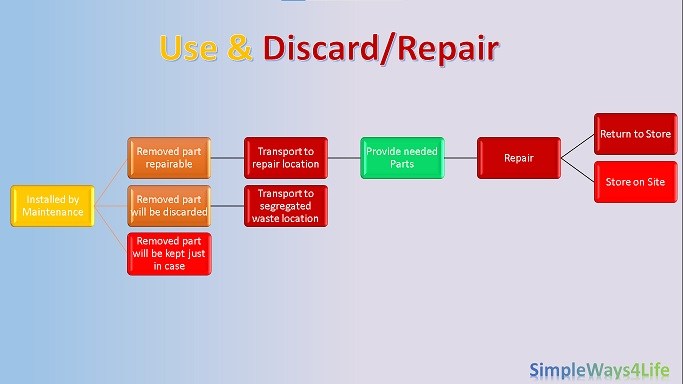
What about the procedure to return an unused part to the store? Is it a difficult or an impossible one? Is the returned part considered a new? Or, is it marked as a returned part? Is someone responsible for reviewing the material usage not as an overall budget within a period but, per individual task and per group? What are the reviewing criteria? Does the installation damage some parts? Do some parts fail prematurely?
What about grease? Usually we receive it in barrels. Some barrels are on the automatic greasing system. While, we fill manual greasing guns -if still used- from other barrels. Is there extra drain at the drain points? Why? Is it a hazardous event source? How do we calculate the consumption? Can the excess or reduced consumption trigger an alert for further inspection?
Against each question we need to have a clarifying line in the process. Who will do this task? And, how he will do the task?
How we close the materials life cycle?
After the usage of the materials needed to complete the maintenance tasks we reach a fork in the road. What happens to the remaining materials? And, What happens to the removed materials?
For the repairable removed material:
In this case this creates a trigger of a new cycle to provide the needed materials for repair. The same path is followed. We need to decide if these material will be scheduled or it is urgently needed. Then, we check if it is available within the maintenance materials warehouse or we need to trigger the external supply chain to supply us with the parts.
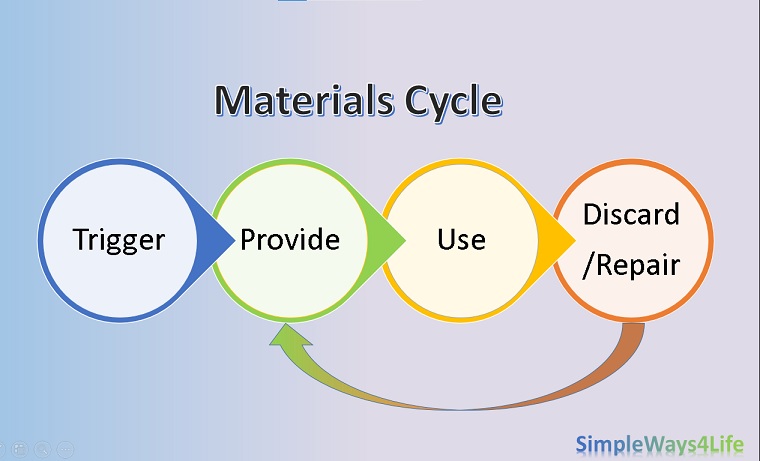
More importantly, where this part will reside till we start the repair and make it ready for usage.
- Will it stay onsite? Can this be hazardous for it or for the production process?
- Can we move it to the repair shop? Does it have a reception area that can accommodate it?
- What are the documentation cycle for handing over the part that needs repair to the repair workshop?
- Do we need to send it with the materials needed for repair or shall the workshop bring these materials?
- Finally, How we will record the repair cost?
The above questions apply to the internal repair by the maintenance team or by an external repair shop as part of outsourcing some of the maintenance activities. Example: We send motors above certain capacity or even all motors to an external motors’ repair workshop.
Usually as the process involves services from a third party that is not part of our internal processes, the cycle of sending, receiving and cost recording is uniform and clearly documented.
What if the removed part is not repairable?
Here maintenance teams have three choices. There is an old school that pile all the removed parts away from the auditors eyes “just in case” we may need a part of it.
The other two choices are to discard the part or o dispose it.
Discard; to get rid of especially as useless or unwanted
Merriam-Webster
Dispose; get rid of by throwing away or giving or selling to someone else. That’s the old meaning we are used to. You can get it from this link.
The common definition nowadays: to give a tendency to, to put in place or, set in readiness
Merriam-Webster
Most parts that are unrepairable can be sold to some recycling company that can make a future use of the materials. The difference between discard and dispose lays in our perception to material that is not any more useful to our maintenance team. If we chose to discard it, then we handle it as useless or unwanted. While, if we chose to dispose it, then we understand that we should transfer it to a clear segregation location where someone from the company will sell it in return of some monetary value.
More importantly, some of the removed materials are hazardous by the law. Just dumping it with the wastes will bring fines tot he company. This means that these materials as batteries or used grease will only reach the hands of certified recycle or dispose companies. that’s how we properly close the cycle even for the unwanted parts.
In Conclusion,
To successfully close the maintenance materials life cycle, we need to rationalize the use of the materials by properly assigning the roles and responsibilities within the maintenance team for each type of the materials. Who will receive it? How we will use it? And what we shall do with the remaining material? No only answers to those questions should be a part of the maintenance processes, also they should be in coordination with the other stakeholders as the warehouse, finance and purchase team.
After the maintenance activity completion, we need to clearly know how to start a new trigger, provide, use and discard/dispose cycle for the removed item. While for the unrepairable items, they will find their way to a regulated end of life disposal point.
If you feel you need help with any of these ideas we discussed, request a Management Consultancy or Coaching Services From our Store

